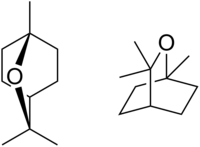Oregonism
Active member
Yea, been reading some stuff about menopause and the learn I'm getting on is... educational, and discouraging. Just learned about the various endocrine/hormone disruptors and mimics, ethanol is but one. I started a thread about using chlorine bleach as a sterilizer/sanitizer in the organic forum, but only got one response and no discussion on the issue. And that issue is that when Cl meets organic molecules, it becomes an organochloride. I already knew this, but didn't know how that relates to pesticides, hormones and the endocrine system.
Personally, I stay away from Cl as much as possible, mainly from habit and not necessarily from a health perspective. It is grandfathered as being listed with the USDA organic program as per Oregon Tilth standards.
It is also a large constituent of PCB's, basically they are molecules of 10 chlorine atoms in rings that hide benzene.
How about Hydrogen peroxide, that is my alternative.


 (also- i will order that horsetail article later today)
(also- i will order that horsetail article later today)


